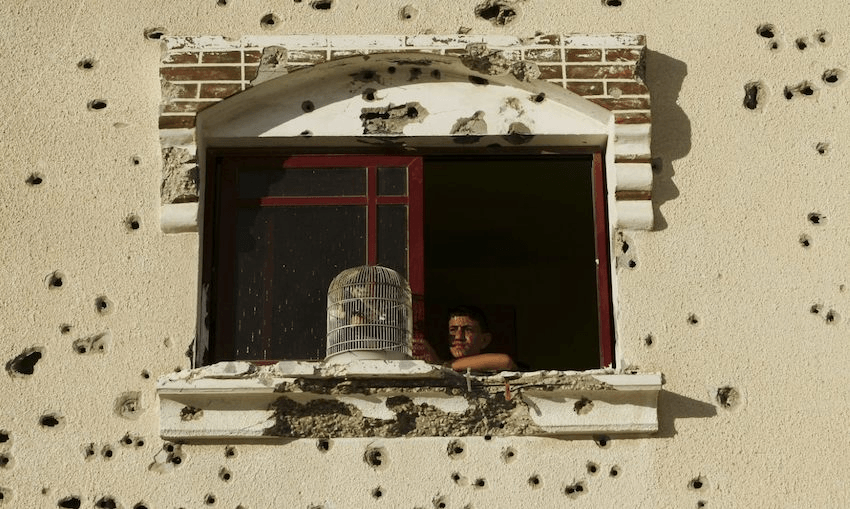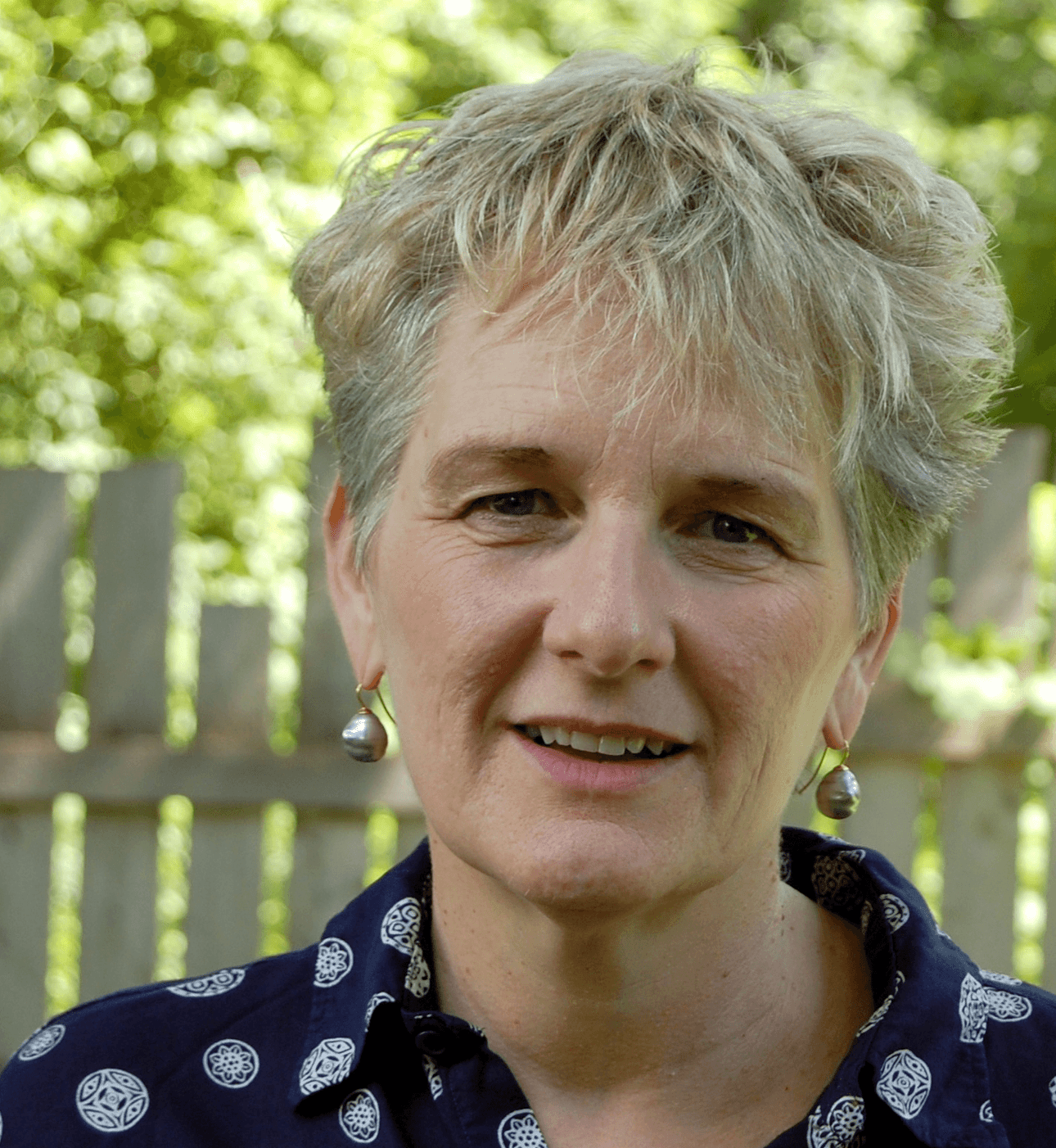A perfectly preserved set of Big Fresh Animatronic Fruit and Veges went on sale this week. Hayden Donnell delivers an exclusive update on their fate.
Everyone remembers their first encounter with Junk & Disorderly’s set of Big Fresh Animatronic Fruit & Veges. There’s something overpowering about the experience. The Butter looms overhead, deranged joy etched on its face. The Lime Juice squints in pain as it sucks at its sour marrow. The Cheese stands defiant, happily hacking away at its own head with a sabre. The set is the best-preserved in New Zealand; a portal back to a supermarket chain lost long ago.
I thought they’d stay in that store forever. When I travelled to Junk & Disorderly last year with the purpose of prising the animatronics away and getting them to our national museum, Te Papa, its owner Nicole Stewart said she couldn’t bear to see them go. “They’re like part of my family,” she said. Even after she heard Dave Dobbyn sing New Zealand’s most patriotic song, ‘Loyal’, she stood firm. “Sorry, it’s just not going to happen, Hayden,” she said, also adding “I’m sorry Dave”.
Apparently family loyalty will only stretch so far. Last week, Stewart put her set of animatronics on sale on TradeMe with a reserve of $4500. Junk & Disorderly has moved and its new premises doesn’t have room for the gigantic treasures. “We are very sad to part with them,” it said.
An estimated 14,000 people immediately messaged me about the auction when it went up last Monday. I was stressed. Panicked. I’m a journalist. I can’t afford $4500. I couldn’t do anything. The auction closed last night. After a flurry of three bids, the animatronics ended up in the hands of a bidder from Dargaville. The end.
Or was it?
What if I told you I knew the identity of the bidder who acquired these treasures? What if I told you they were one of the heroes of my show, Get It To Te Papa? Anthony Blundell is a Ruawai local. He’s the owner of a large kumara distribution business, Kaipara Kumara. And last night he and his wife Helene became the only people in New Zealand with two sets of Big Fresh Animatronic Fruit & Veges.
If you’ve ever driven to Dargaville, you’ll probably know Kaipara Kumara. It’s the shop with a huge set of Big Fresh animatronics sitting on its roof. Blundell acquired his set of animatronics in 2002, and has kept them as unofficial mascots for his business ever since.
Like me, Blundell was messaged more than 10,000 times about Junk & Disorderly’s auction. At first he didn’t want to spend the money. Thankfully Helene had more sense. She made a bid. By Sunday the Blundells were willing to fight. When another TradeMe user from Franklin offered $4510 for the animatronics, they countered with a superior bid of $4520. That effort proved good enough to secure them the artefacts.
I got in touch with Anthony a week ago, when I first saw Helene’s bid. He assured me that if he won the auction, he was open to donating a few of his newly acquired treasures to the people of New Zealand if I could find them a home befitting their status.
First I contacted mayor Phil Goff about preserving the animatronics. “Through the support of the Santa Parade, council already backs one arguably terrifying animatronic, we think that’s probably enough Hayden,” he wrote.
I contacted John Tamihere. He didn’t reply.
I even contacted Craig Lord. This was his response.
I was demoralised. As a dog returns to its vomit, I had to return to the source of my greatest failure. I had to get in touch with Te Papa.
The last time I approached our national museum asking it to acquire some treasures, I was rejected so badly that I ended up setting up a museum outside the museum called Also Te Papa. But I couldn’t give up. The museum took our calls, listened to our plea, and returned a response through its spokeswoman Kate Camp a day later.
“We totally get why people want to see them preserved – love them or hate them, they definitely take you right back to the 90s,” it began. “But it’s a no for us – these are some pretty huge items to have to find room for, and we feel we can tell the story of New Zealand in the 90s through other objects. We have some amazing 90s relics in the collections, from a packet of garlic flavoured condoms, to the dress worn by Xena Warrior Princess, to Black Magic, the yacht that won the America’s Cup.”
Once again, I was disappointed. But all was not lost. Junk & Disorderly’s animatronics were originally from the Mt Wellington Big Fresh store. Maybe Auckland Museum would take them. Its human history curators debated for two days before sending a statement.
“We have decided that we won’t be able to accept any of the Big Fresh Veges,” it said. “We are already doing some active collecting of contemporary objects that relate to the social and cultural history of Auckland, and we need to prioritize carefully when considering new acquisitions.”
Even MOTAT wasn’t really keen. “Unfortunately at the moment, they aren’t aligned with the strategic direction of MOTAT’s visitor experience,” its statement said.
I’m going to say this as calmly and objectively as possible: these are absolutely fucked decisions. Our archivists are deaf to New Zealand’s true culture; blind to what shapes us as a people. Garlic-flavoured condoms! Garlic-flavoured condoms!! Anyone who thinks a garlic-flavoured condom is more worthy of a museum collection than a perfectly preserved Big Fresh animatronic vege is not fit to be in charge of a public toilet, let alone New Zealand’s historical record. Everyone responsible for these decisions should be fired, rehired, fired again in a worse way, then put on a dinghy and told to row for Perth. Sorry if you’re offended. I’m just writing facts. It’s called journalism.
Thankfully, one beloved institution still actually liked and appreciated New Zealand. On Friday afternoon, an email landed in my inbox from Rainbow’s End. Its marketing manager Susan Mudie had come back to me just six hours after I got in touch with her. She’d taken a walk around the theme park and come back fizzing with ideas. “The exciting lure of vintage veggies helped me bust through my deadline in record time,” she said. “I’ve had a quick walk around with the construction manager and if there are a couple looking for a home, we think we can make them a nice home in the indoor section of Kidz Kingdom at Rainbow’s End.”
But that wasn’t all. Mudie thought the animatronics could be restored to some of their former glory. “We have some pretty clever engineers on site, I reckon if we do get a couple, and they have all the mechanisms, but aren’t working, they’ll be able to get them moving,” she said.
I don’t want to progress further without exploring other options, and securing a public mandate. But this seems like a potential solution. The Big Fresh Animatronic Fruit & Veges left such a lingering impact primarily because they awed and terrified a generation of children, often simultaneously. That couldn’t have happened without their odd, lurching kineticism. Something about the way the fruit swayed backward and forward seared itself into memory. Maybe it was the smiles etched on their faces, or the eerie songs they were meant to be singing out of those clenched grins. More likely, it was all of those things, together.
In a museum, the animatronics would be static curiosities; their distressing pantomime of animate life described on a plaque rather than acted out for real. Between the Dixie Chickens and the Fortress of Fun in the Kidz Kingdom, the Big Fresh Animatronic Fruit and Veges could sway their way into the hearts and minds of another generation of children. They wouldn’t just be a relic or an exhibit. At Rainbow’s End, Big Fresh could live again.
Watch the full Big Fresh episode of Get It to Te Papa here.





